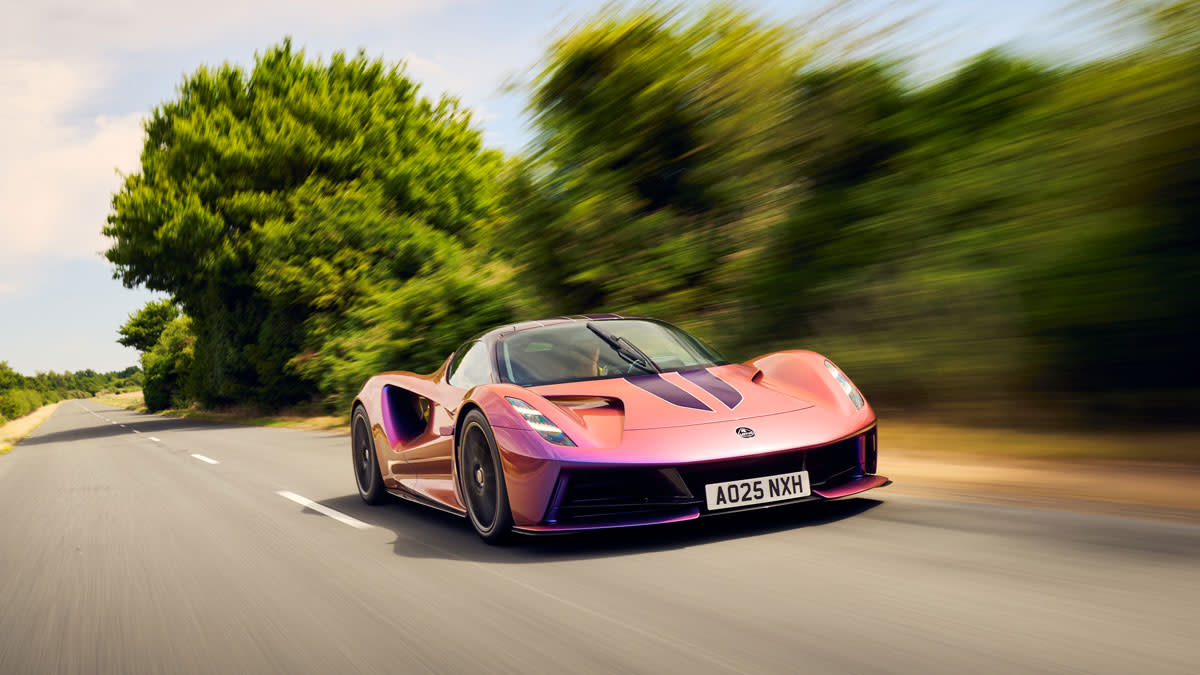
The Daily Mail newspaper campaigned for it to be banned. The Association of Chief Police Officers called it “an outrageous invitation to speed.” And in the British parliament, Baron Carlile of Berriew declared it “should not be available for public purchase.” The object of their ire was the Lotus Carlton: a family sedan built by Vauxhall—then a subsidiary of General Motors—and tuned by Lotus. With a 3.6-liter twin-turbocharged inline-six engine and the manual transmission from a Corvette ZR-1, the 377 hp Carlton could reach a top speed of 176 mph. Back in 1990, that made it faster than sports cars such as the Ferrari 348, the Honda NSX, and the Porsche 911 Turbo.
Thirty five years on, a new Lotus makes those once-shocking numbers look almost quaint. With a liquid-cooled lithium-ion battery, two gearboxes, and four electric motors, the Evija (“Ev-eye-ya”)—starting at $2.7 million—develops a barely believable 1,972 hp and will keep going to an electronically limited 217 mph. (I’m told a prototype nudged 250 mph in testing.) So where is the outrage? Have we all become desensitized to speed?
More from Robb Report
At this juncture, you might point out that the Evija isn’t new, considering it was revealed in 2019: a bold statement of intent for a reborn Lotus under the guardianship of Geely, the Chinese conglomerate that also owns Volvo and Polestar. However, after delays caused by Covid, parts supplies, and, one suspects, a lack of demand for exotic EVs, Lotus plans to build 130 examples, but won’t reveal how many it has sold. Importantly, though, the Evija is finally available for us to drive.
I attended that original debut in London, along with numerous Geely executives and excitable Chinese influencers, and I confess to getting swept up in the hype. The Lotus looked incredible and promised performance that seemed almost otherworldly. But six years later, does the future in 2019 already look like the past in 2025? In short, has the Evija been worth the wait?
Design
I meet chief designer Russell Carr at the Lotus headquarters in Hethel, Norfolk: home of the British marque (and its now-defunct Formula 1 team) since 1966. The Evija is made here, in a building that once hosted the Lotus Carlton assembly line, and was developed on Hethel’s 2.2-mile test track—previously used to hone Lotus legends such as the Esprit and Elise. Even in an era of great change, a palpable sense of history hangs in the air.
Time hasn’t dulled the impact of the Evija’s design. Shaped like a Group C racer for the road, its “Violaceus” paint changes from bright pink to deep purple depending on the light. “This really was an explosion of creativity,” says Carr. “A hypercar is the pinnacle for a designer.” His guiding principle was “porosity”—encouraging airflow through the body to improve downforce and reduce drag. It’s what inspired the Evija’s most dramatic flourish: the enormous venturis that exit between its active rear wing and DRS-enabled diffuser. Ringed by red LEDs, they resemble glowing jet afterburners.
Unlike what Lotus terms its “lifestyle vehicles”—the Emeya sedan and Eletre SUV—which both use a skateboard-style platform, the Evija has a central battery stack immediately behind its cabin. As Carr explains, this allows for a lower driving position and a sleeker, wedgier profile, plus it helps to centralize weight and reduce the polar moment of inertia (i.e. the car’s resistance to changing direction). The layout makes the Evija look mid-engined, except that peering through its rear window reveals springs and brightly anodized dampers, rather than a pair of cam covers.
Using inboard suspension from Canadian company Multimatic also shifts weight closer to the car’s center line and cuts air turbulence around the wheel arches. Additional motorsport-style heave dampers act to suppress squat and dive, giving the bespoke Pirelli Trofeo R tires a fighting chance of relaying 1,257 ft lbs of torque to the road.
Aiding this cause is active aero that helps generate a total of 3,307 pounds of downforce at top speed. For comparison, the current Porsche 911 GT3 RS, with its Boeing-spec rear wing, musters a maximum of 1,896 pounds of downforce. With the Evija, it all hangs off a huge carbon-fiber monocoque that weighs a mere 265 pounds. In total, the Evija tips the scales at 4,167 pounds with fluids: nearly half a ton lighter than a Rimac Nevera or the closely related Pininfarina Battista.
Power Train and Hardware
Saving weight, of course, was at the heart of Lotus founder Colin Chapman’s mantra to “Simplify, then add lightness.” However, using a relatively small 93 kWh battery does inevitably reduce the Evija’s range. Lotus quotes a WLTP-tested figure of 195 miles, which is probably closer to 150 miles in the real world. By comparison, Rimac’s Nevera—with its 120 kWh battery—has an official range of 304 miles.
The Evija’s 800 volt architecture allows for charging at 350 kW, which means it can potentially replenish from 10 percent to 80 percent in 15 minutes. Four electric motors drive each of its wheels independently, with dynamic torque vectoring to proactively manage the immense forces at play. It’s this technology that makes a car with 1,972 hp—more than four times the power of a Type 79, Lotus’s last F1 World Championship winner—safe to drive for mere mortals. Or so I’m hoping.
I duck beneath the dihedral door (opened hydraulically using the key fob) and drop down into a thinly padded carbon seat. The rectangular steering wheel features a Ferrari-style manettino with five drive modes. Range is essentially a valet mode and limits the car to 80 mph. City offers a maximum of 700 hp and 100 mph, while Tour lifts output to 1,400 hp, albeit still with a softer throttle response for smooth progress.
Sport mode is where things get serious, tensing the car’s muscles and unleashing the entire prairie of horses. Finally, Track mode ramps up downforce by fully elevating the diffuser flaps, but is only available if you remove the rear license plate first. Lotus seems shy about quoting performance figures or lap times, only saying that the Evija hits 60 mph in “less than 3.0 seconds.” However, John Farn-Ramsay, principal engineer for Lotus vehicle dynamics, tells me it can lap Hethel in approximately 1 minute, 20 seconds –which is 10 seconds quicker than a 400 hp Emira Turbo SE.
Farn-Ramsey climbs into the passenger seat as I familiarize myself with the Evija’s controls; the last time I sat here was six years ago, after all. The interior is pared-back and functional, like that of an Elise, with plenty of Alcantara and exposed carbon fiber, plus an overhead console that nods knowingly to the roof-mounted radio in the “Essex” Turbo Esprit. There are screens for all three rearview cameras, but infotainment is limited to a modest display in front of the driver. Most functions are accessed via a slim center console with hexagonal haptic touchpads.
Selecting oh-so-sensible Range mode, I prod the start button and trundle slowly past the Chapman Production Center, where the Emira sports car is assembled. Judging the Evija’s width is easy thanks to the peaked “Becker points” on its front fenders—named after famous Lotus test driver Roger Becker—but I’m finding it hard to relax. The Norfolk sky has suddenly darkened, and droplets of rain are spotting on the windshield. This could make things interesting . . .
Performance
I start with a couple of exploratory laps to learn the circuit. What’s immediately apparent is the noise: an unfiltered electric hum with no augmentation. It grows in volume and intensity, from a piercing whine to an ear-splitting shriek. “Other Lotus EVs are almost silent, but, in this car, you really hear your speed,” says Farn-Ramsay. He’s right, and while the wail of excited electrons is no match for the roar of a combustion V-8 or V-12, the Evija does sound authentic and unique.
It drives like a Lotus, too. The electro-hydraulic power steering overflows with tactility, serving up a vivid, feathery feel not unlike a modern McLaren. And despite the sub-optimal combination of damp asphalt and semi-slick tires, the chassis feels neutral and easy to exploit. It might be one of the heaviest Lotus cars ever sold, but the Evija feels lithe and light on its feet: a precision tool rather than a blunt instrument.
Stepping up through City and Tour modes, I begin to get on the throttle earlier and feel the torque vectoring at work, the algorithm tweaking individual motor outputs to tighten the car’s line without tipping it off-balance. The AP Racing carbon-ceramic brakes are also mightily effective, as they need to be. With no energy regen, feedback is consistent and confidence-inspiring, even when you stamp on the pedal at three-figure speeds.
Whatever the subtleties of its chassis, it’s the Evija’s raw performance that scrambles your brain and thumps you—quite literally—in the back. Many of us have experienced the brutal takeoff and seamless acceleration of a very fast EV, but the way the Evija keeps on pulling beyond 100 mph seems to defy physics. By the time you have remembered to breathe, it has already ripped a hole in the horizon.
Now in full-power Sport mode, I’m hitting 150 mph just before the chicane on Hethel’s main Mansell Straight, then clipping the curb before another dizzying rush of acceleration towards the 180-degree Rindt Hairpin. With no run-off—just a low fence in front of some trees—it’s the riskiest corner on the circuit and where I have my “moment.” Flexing my right ankle slightly too soon, I feel the car squirm and step unexpectedly sideways. It’s nothing the stability control can’t correct, but is a timely warning that colossal power demands rightful respect. Time to swap seats.
Now it’s Farn-Ramsay’s turn to show me what this hypercar can really do. “Are you ready?” he asks, punching the throttle without waiting for my answer, then smudging the rear tires into a long and graceful drift. I brace myself against the door handle as he nudges 175 mph before the same chicane, then flicks the car right and left, somehow calm and measured despite the violent forces acting upon us. By the time we pull back into the pit lane, I feel duly humbled, and in need of a break—both mentally and physically—as the Evija is a sensory overload.
Is It Worth It?
With six years of hindsight, it seems doubtful Lotus would have chosen to pin its colors to an electric hypercar. A lot has changed since 2019, and it has become evident that these extreme EVs are a tough sell; witness Porsche abandoning the Mission X project and Mate Rimac embracing hybrid tech (and a 9,000 rpm V-16 engine) in his role as CEO of Bugatti.
While you can still buy a hypercar with an outrageous engine, it’s understandable that the Evija might be overlooked. However, for those with $2.7 million to spend, this isn’t a binary choice. They will already have one or more gas-powered hypercars in their collections, and the Evija offers a genuinely different experience: one of rabid, overwhelming speed combined with dynamic witchcraft that results from being able to drive each wheel independently. It also looks sensational and will undoubtedly be a very rare sight.
A range of less than 200 miles means this certainly isn’t a long-striding GT, and I suspect its high-pitched soundtrack would become wearing on the freeway. But as a car for special occasions, a dose of electric-shock therapy for mountain roads or the racetrack, the Evija is as immersive and exciting as you’d hope. It’s just a shame that, as its maker’s EV strategy falters and the future of Hethel itself seems in doubt, the Evija may be more of a lightning rod for Lotus than the realization of an electric dream.
Specifications
Vehicle Type
Two-door coupe
In Production Since
2024
Power Train
93 kWh battery, four electric motors, 1,972 hp with 1,257 ft lbs torque
Single-speed auto transmission
Performance
Zero to 60 mph: claimed to be less than 3.0 seconds
Top speed: 217 mph
Price Before Options
$2.7 million plus taxes
Click here for more photos of the 1,972 hp Lotus Evija hypercar.
Best of Robb Report
Sign up for RobbReports's Newsletter. For the latest news, follow us on Facebook, Twitter, and Instagram.
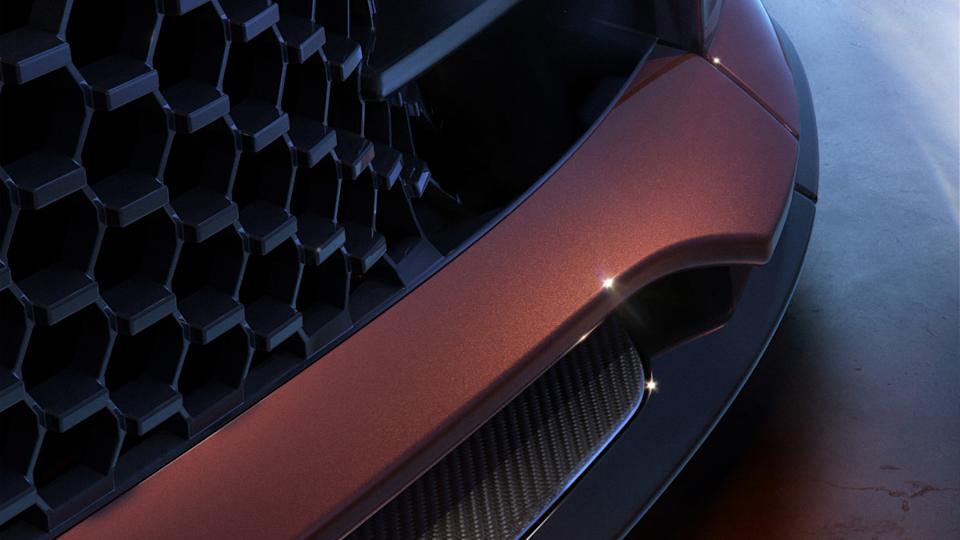
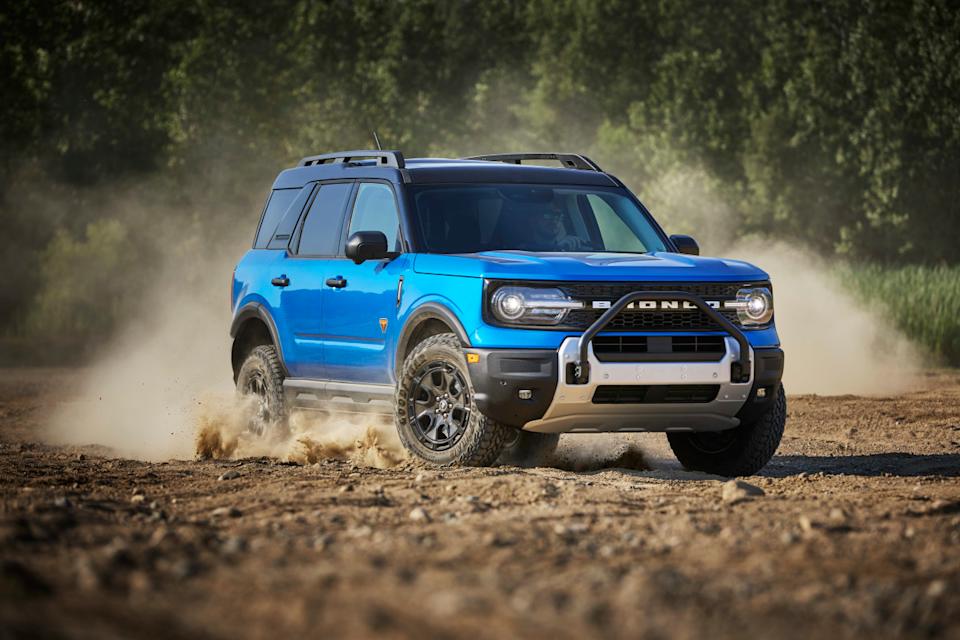
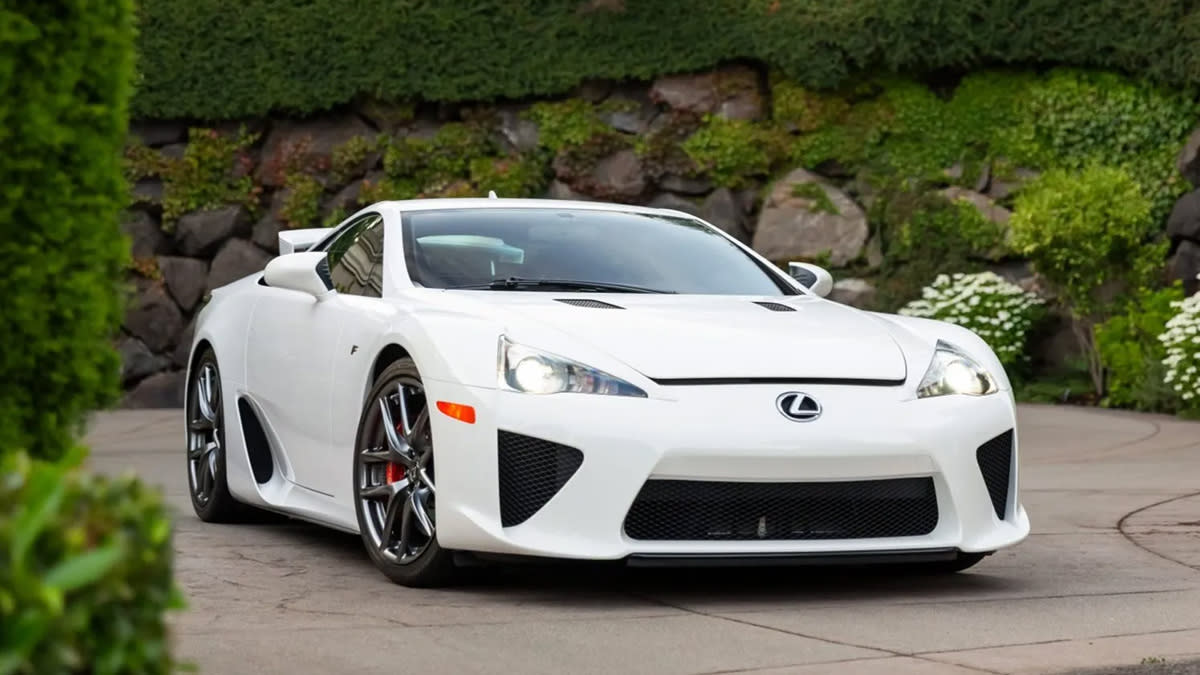

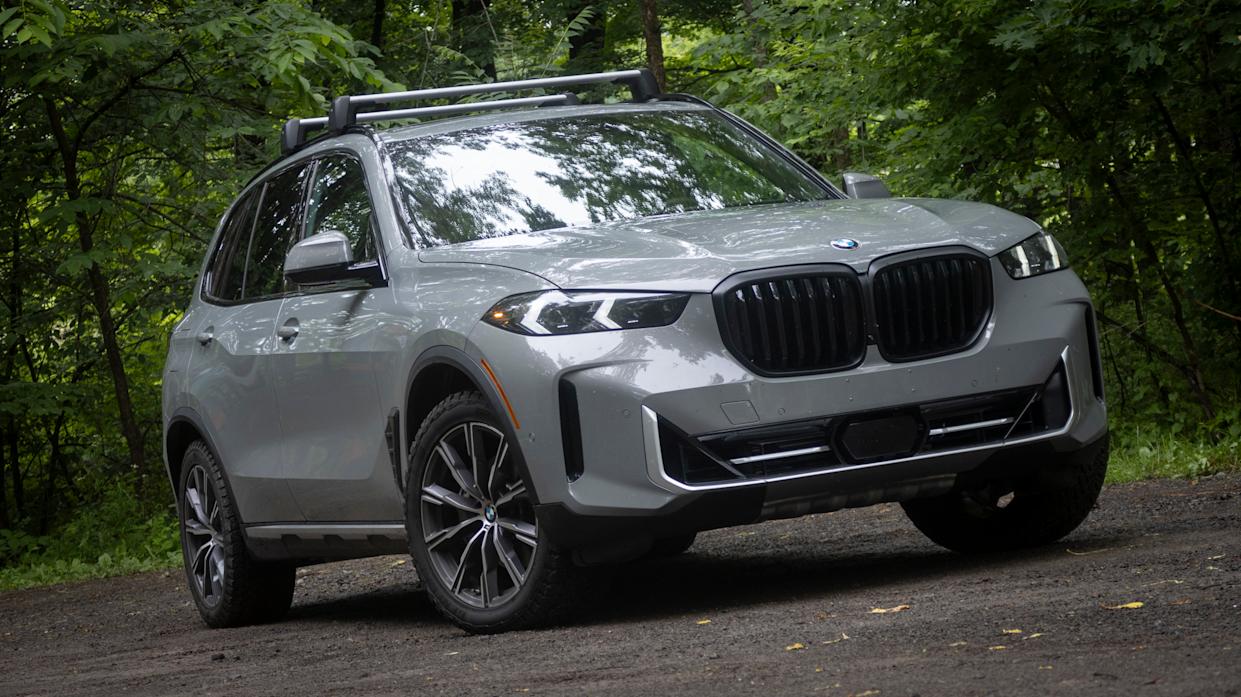
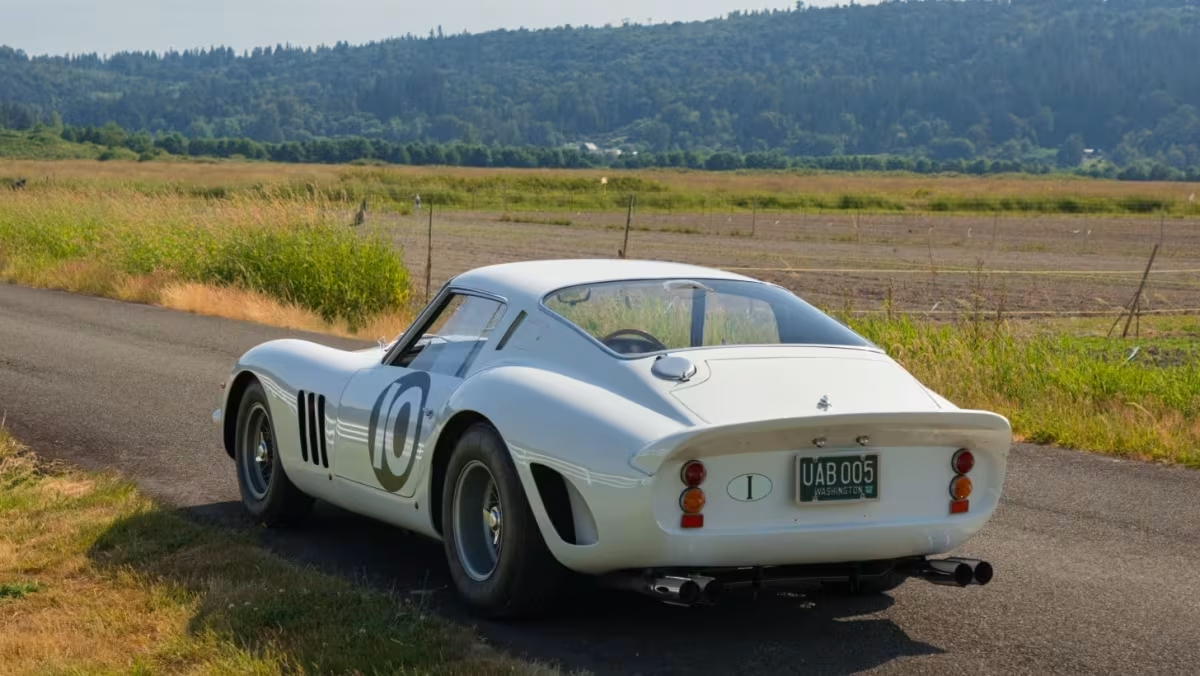
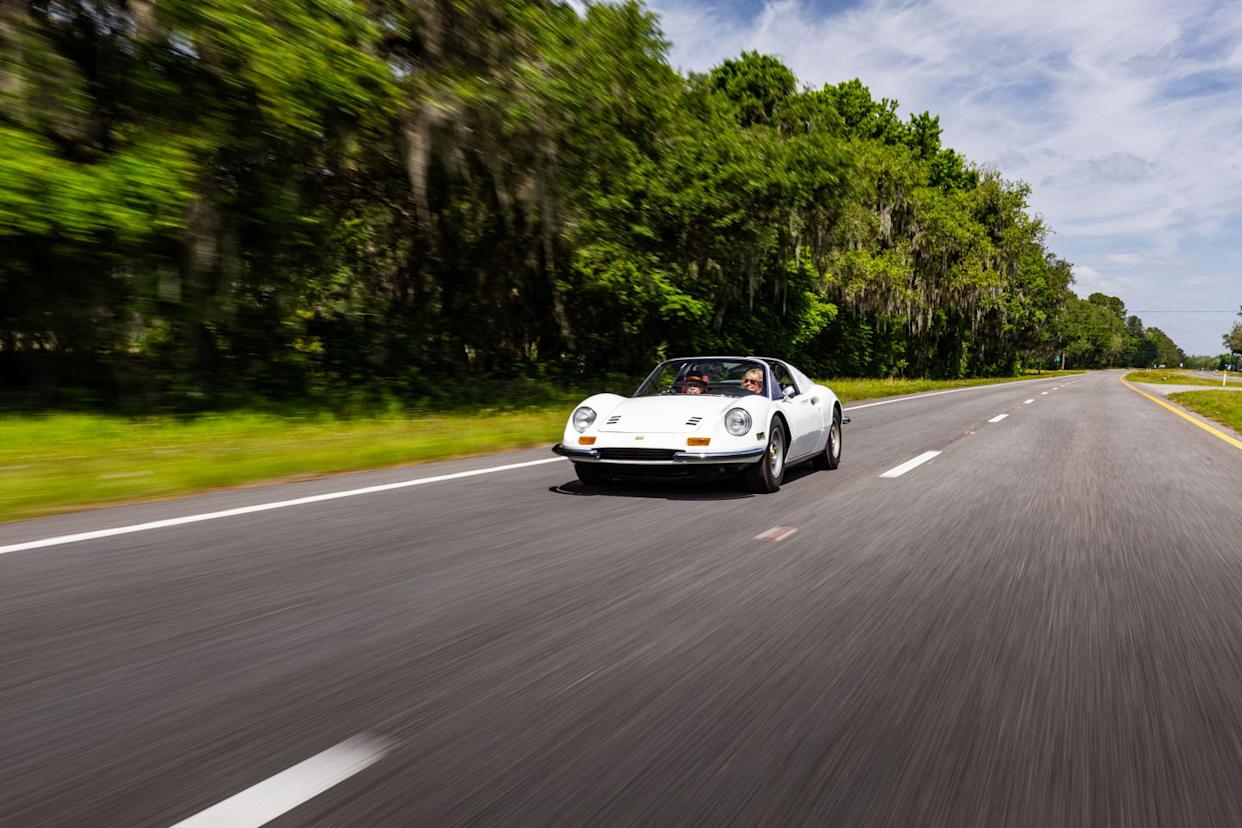
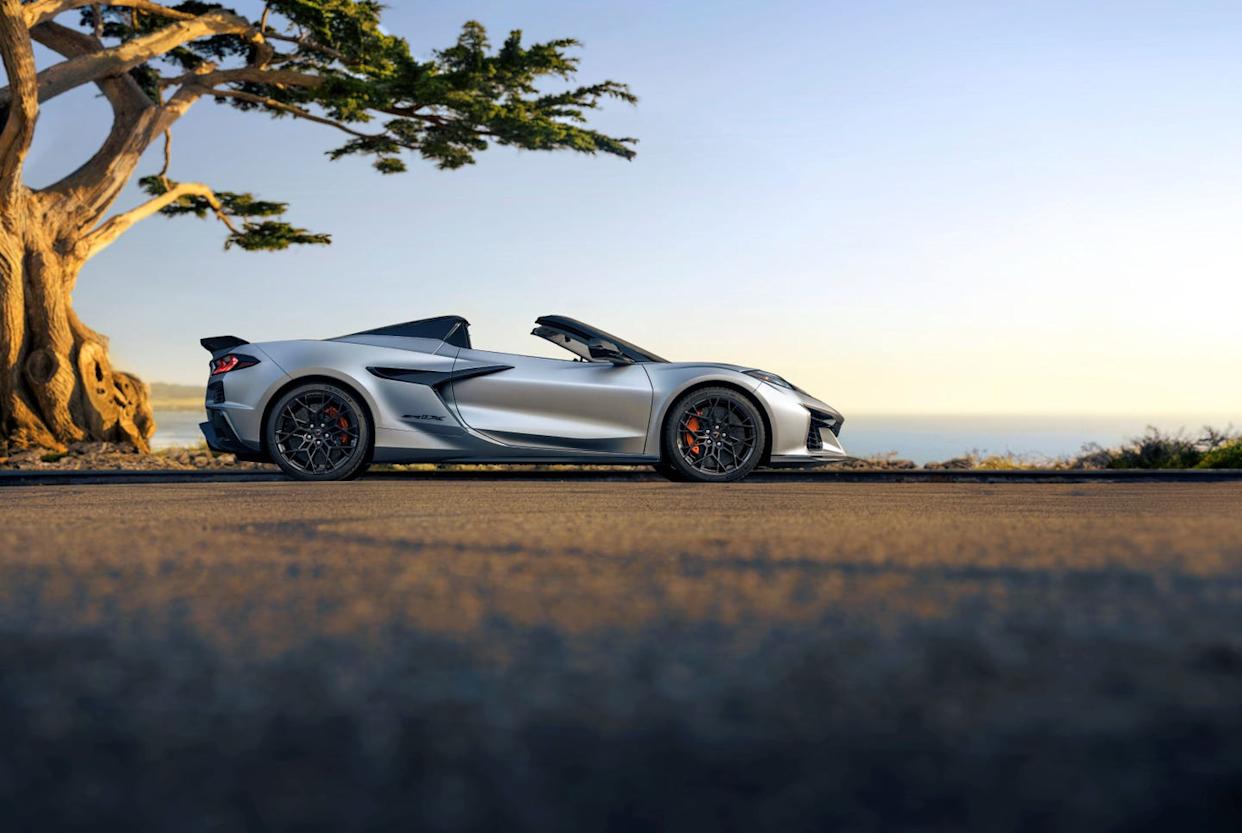
Comments